Overview Of Gokyo Cho La Pass Trek
Let’s get one thing straight: if you’re looking for a cute little hike with lattes at every lodge and WiFi strong enough for Netflix, close this tab right now. The Gokyo Cho La Pass Trek isn’t here to pamper your wanderlust—it’s here to chew up your quads and spit you out somewhere between a frozen glacier and a Sherpa prayer stone. This isn’t just another detour off the Everest Base Camp trail—it’s the cold, wind-slapped, high-altitude side quest for trekkers who want more than bragging rights. They want their souls scrambled at 5,420 meters.
What do you get? Six Gokyo Lakes so blue they make your water bottle look like swamp juice. Villages so remote even yaks look surprised to see you. A vertical boulder-scramble over Cho La Pass (5,420m)—where the trail disappears under ice, and every step feels like arguing with gravity. And yeah, that’s before you even reach Everest Base Camp.
You’ll skirt the Gokyo Valley, stumble across Ngozumpa Glacier (Nepal’s longest), and crawl into Thagnak—a place that sounds made-up but might just be where your knees go to die. This is where mountain dreams go feral. Ancient Sherpa villages hum with old-world mysticism, lodges flicker with stove heat, and every other trekker looks like they’ve seen some things—because they have.You won’t come back looking cute. You’ll come back chapped, sore, windburned—and absolutely ruined for normal life. Welcome to the Gokyo Cho La Pass Trek. Let’s see if you’re built for it.
There’s something about the Gokyo Cho La Pass Trek that doesn’t just challenge your legs — it messes with your mindset in the best way possible. One minute you’re catching your breath under a sky that looks too big to be real, and the next, you’re standing above clouds with tears in your eyes for no good reason other than being alive here. This trek doesn’t care about your resume or how many Everest documentaries you’ve watched — it just wants to know how bad you want to cross glaciers, stare down 8,000-meter peaks like Cho Oyu, and drag your tired body over a frozen, knife-edge pass at 5,420 meters. It’s not for the cute selfie crowd — it’s for people who want to come home different.
You’ll walk through wind-whipped valleys, stumble across prayer-flag-laced ridges, and spend nights in yak-wool-lined teahouses where your hands shake too much to write in your journal. The Gokyo Valley is unreal — like stepping into a National Geographic spread with turquoise alpine lakes, crumbling moraine walls, and the screech of Himalayan crows overhead. The trail takes you up through Namche Bazaar, Dole, and the remote Gokyo village, across Ngozumpa Glacier (Nepal’s longest), then smacks you with Cho La Pass before merging into the classic Everest Base Camp route. Every day is a new mood swing — some days you’re floating, some days you’re cursing your boots, but every step feels like it’s chiseling you into something stronger.
And honestly? After this, skyscrapers feel like a joke. You start respecting yak herders and trail-side monks more than billionaires with private jets. The altitude strips your ego clean. You’ll forget your inbox. You’ll remember the crunch of ice under your crampons, the way the wind howled through the pass, and that one bowl of Sherpa stew that made you feel whole again.
This isn’t just a trek — it’s a reboot. The Gokyo Cho La Pass via Everest Base Camp trek is pure Himalayan grit, glacial drama, and spiritual uppercuts, all packed into one surreal adventure. You won’t come back the same — and that’s the point.
What You’ll See in the Wild: Nature, Flora & Fauna Along the Gokyo–Cho La Trail
Let’s be real — the Gokyo Cho La Pass Trek doesn’t roll out a welcome mat. Nature out here doesn’t care if your hiking boots are new or your jacket cost $400. The trail slaps you with everything from dust-choked pine forests to Martian-looking rock fields that seem designed to snap ankles. You start low in rhododendron and birch zones around Phakding and Namche Bazaar, where the air smells like crushed pine needles and yak dung. It feels almost friendly. Spoiler: it doesn’t last.
Climb higher, and the trees peace out fast. Around Dole and Machhermo, shrubs shrink into scraggly alpine turf, and you start seeing weird little cushion plants that survive off frost and grit. The terrain turns stark, raw, like a forgotten planet — and then suddenly, bam: you’re standing next to the Gokyo Lakes, looking at electric-blue glacial pools surrounded by icy cliffs. Unreal. Like someone color-graded the Himalayas just to mess with your head.
The Ngozumpa Glacier is a beast. Longest glacier in Nepal. Cold, cracked, and constantly shifting under your feet. You’ll hear it groan like a sleeping giant — and yeah, that’s normal. But don’t get too close to the edge unless you want to end up in someone else’s travel blog as “that guy.” Once you hit the Cho La Pass, everything’s sharp, brittle, and high-stakes. The air is razor-thin, the rocks are slick with frozen mist, and there’s literally nothing soft around you. It’s survival-mode beautiful.
And the animals? Oh man. Don’t expect Disney. Sure, you’ll spot Himalayan tahrs scrambling across cliffs like it’s nothing, and blue sheep doing yoga poses on boulders. If you’re lucky (or cursed), you might lock eyes with a lammergeier — a bone-crushing vulture with a wingspan that could block out the sun. Keep your snacks buried unless you want a Himalayan raven to swoop down and mug you mid-trail. And yes, there are whispers of snow leopards, but if you see one, you’re either blessed or hallucinating from altitude.
This route is alive — wild, unpredictable, and a little bit savage. You don’t hike it, you earn it. The flora and fauna on the Gokyo Cho La Pass Trek aren’t background vibes — they’re part of the story. From gnarled juniper bushes that smell like ancient incense to frostbitten silence above 5,000 meters, nature here is raw and wild and completely untamed. No filters. Just straight Himalayan wilderness, punching you in the lungs and the soul.
Route Overview: The Gokyo Cho La Pass Trek - A Journey That Will Own You
This is the trek that separates the Instagram hikers from the real deal. I remember standing at Lukla's terrifying airstrip, watching porters load impossible weights onto their backs while my knees already trembled at what was coming. The Gokyo Cho La route isn't just about reaching Everest Base Camp - it's about surviving the journey there.
The Warm-Up That Punches Hard
That first day to Phakding? A trap. The trail lulls you with gentle riverside paths, letting you think "I've got this." Then comes the climb to Namche - endless stone stairs built by sadists, suspension bridges swaying over roaring gorges, and the first real taste of altitude. I'll never forget rounding that final bend to see Namche clinging to the mountainside, my lungs burning but already addicted to the challenge.
Where the Real Test Begins
Past Namche, the world changes. The air gets thinner, the trees disappear, and suddenly you're in a landscape that feels more moon than earth. The hike to Dole reveals why they call this the "high route" - you're walking along ridges where one misstep would send you tumbling hundreds of meters down. Machhermo arrives like a mirage, its stone teahouses offering shelter from winds that want to peel your skin off.
Gokyo's Magic & The Glacier's Wrath
Nothing prepares you for that first view of the Gokyo Lakes. That impossible blue isn't in any photo - it's glacial water so pure it hurts your eyes. I spent hours at Gokyo Ri watching clouds dance around Everest's summit, knowing the hardest part was still coming. Crossing the Ngozumpa Glacier the next morning, I learned why locals call it "the frozen ocean" - a chaotic jumble of ice and rock that laughs at human balance.
Cho La Pass: The Mountain's Gauntlet
They warn you about Cho La. They don't warn enough. Our 3 AM start in Thagnak was so cold my water bottle froze solid. The pass itself is a cruel joke - first loose scree that slides beneath your feet, then blue ice so steep we clipped into fixed ropes. At the top, gasping at 5,420m, I understood why Sherpas leave prayer flags here - this place demands respect.
Everest's Backyard & The Long Road Home
The final push through Lobuche to Gorak Shep feels like walking on Mars. Base Camp itself is underwhelming - just rocks and ice - but Kala Patthar's sunrise view? Worth every step. The descent back to Namche is its own kind of torture, knees screaming on trails you barely noticed climbing up.
Why This Trek Stays With You
- You'll dream about the sound of yak bells for months
- Your definition of "a good meal" becomes “anything hot”
- That first shower in Kathmandu feels like rebirth
- Ordinary life seems dull compared to Himalayan dawns
When to Go:
- Spring (March-May) for stable weather and wildflowers
- Fall (Sept-Nov) for clear skies but colder nights
- Avoid monsoon - the trails turn to mudslides
The Truth No One Tells You:
This trek doesn't care about your fitness level or how much you spent on gear. It will humble you, break you down, then rebuild you into someone who sees the world differently. And you'll thank it for the privilege.
The Gokyo Cho La Pass Trek: 7 Soul-Shaking Highlights That Define This Himalayan Adventure
Let me tell you what makes this trek different - it's not just about reaching Everest Base Camp. The Gokyo Cho La route takes you through Nepal's wildest high-altitude landscapes, where every day serves up heart-stopping views and gut-check challenges. I've done this trek twice, and these are the moments that still give me goosebumps:
1. Conquering Cho La Pass (5,420m) - The Ultimate High-Altitude Test
- Navigate one of Nepal's most thrilling mountain passes between Gokyo and Everest regions
- Pre-dawn climb over blue ice and loose scree with fixed ropes for safety
- That euphoric summit moment looking down at Khumbu Glacier's frozen chaos
2. Gokyo Lakes - Nature's Most Insane Swimming Pool
- Six glacial lakes so vibrantly turquoise they look photoshopped
- Sunrise at Gokyo Ri (5,357m) with Everest, Lhotse and Makalu reflected perfectly
- The eerie silence broken only by occasional rockfalls echoing across the valley
3. Ngozumpa Glacier Crossing - Walking on Frozen Time
- Trek across Nepal's longest glacier - a surreal maze of ice pinnacles and melt pools
- Spot ancient debris from avalanches that took centuries to reach this point
- That stomach-dropping moment when you hear the glacier creak beneath your boots
4. Namche Bazaar Acclimatization - Where Climbers Become Family
- Explore the vibrant Sherpa capital with its Saturday market and Everest memorabilia
- Acclimatization hike to Everest View Hotel for your first proper mountain panorama
- Last proper showers and bakeries before heading into the high wilderness
5. Everest Base Camp Pilgrimage - More Than Just a Photo Op
- Walk among expedition tents during spring climbing season
- Touch the iconic Base Camp rock surrounded by prayer flags from past expeditions
- The realization you're standing at the foot of the world's highest mountain
6. Kala Patthar Sunrise - The Himalayas on Fire
- Pre-dawn climb to 5,643m for the trek's most breathtaking viewpoint
- Watch Everest's pyramid shadow stretch across the Khumbu Valley
- That golden moment when the entire Himalayan range lights up at dawn
7. Thagnak to Dzongla - The Most Dramatic Trail in Nepal
- Heart-pounding traverse beneath hanging glaciers on Cho La approach
- Overnight in Dzongla's lonely teahouse with Ama Dablam looming overhead
- The raw, unfiltered Himalaya far from the crowded Everest trails
Why These Highlights Matter
Most treks give you great views. This one gives you stories you'll tell for life - like that time you crossed a frozen pass before sunrise, or when you drank glacial water straight from Gokyo Lake. It's not just about the destinations; it's about becoming part of the mountain's rhythm for two unforgettable weeks.
Pro Tip From Experience:
Don't rush the acclimatization days. That extra night in Namche or Machhermo could mean the difference between summiting Cho La or turning back. The mountains aren't going anywhere - let your body adjust properly.
🌤️ When the Mountains Roll Out the Red Carpet: Gokyo Cho La Pass Trek Seasonal Guide
The Gokyo Cho La Pass Trek isn’t one of those “go whenever you feel like it” trails. Nah, this is the kind of journey where timing is everything. You’re dancing with altitude, dodging unpredictable weather, and chasing clear skies to witness the might of Everest, Lhotse, and the surreal Gokyo Lakes in all their glory. Picking the best season can make or break your experience. So whether you’re a spring bloom lover or a crisp winter air addict, here’s the brutally honest breakdown of what it actually feels like to trek Gokyo Cho La Pass in every season — no brochure sugarcoating here.
🌸 Spring (March to May): The Bloom-Packed, Clear-Sky Classic
Spring is hands-down one of the best seasons for the Gokyo Cho La Pass Trek. You get crisp mountain views, warmish days, and a trail that’s alive with rhodo-blazing color bombs — yes, the rhododendrons are not just pretty; they feel like nature is high-fiving you every step of the way.
The skies are typically clear, making this the best time to photograph everything from Mount Everest views at Gokyo Ri to the Cho La Pass’s rugged glacial paths. Teahouses along the Everest and Gokyo trails are buzzing with trekkers from around the world. You won’t feel alone — or lonely.
Trail conditions? Ideal. Dry enough not to slip every 10 minutes and stable enough to keep the passes open. But keep in mind: altitude sickness doesn’t take a holiday. Spring is beautiful but doesn’t mean you’re immune to the high-altitude grind.
☀️ Summer/Monsoon (June to Mid-September): The Wild Card
You like mud? Cool, because summer brings plenty of it. Trekking during the Nepal monsoon season isn’t for the faint-hearted. Expect slippery trails, unexpected landslides, fogged-out views, and leeches that treat you like a buffet.
Visibility? Minimal. Those jaw-dropping Himalayan panoramas? Mostly playing hide and seek behind thick clouds.
On the plus side — if you’re a solitude junkie and love the feeling of having the trail to yourself, this is it. Fewer trekkers dare venture this route in monsoon. But you better have waterproof everything — boots, jacket, soul — because the Gokyo Lakes and Cho La Pass won’t wait for your gear to dry.
Also, flight delays to Lukla become a game of luck and patience. So unless you’re a weather gambler or prepping for a hardcore challenge, monsoon trekking on this route is a serious commitment.
🍁 Autumn (Mid-September to November): The Gold Standard of Trekking Seasons
If Nepal had a national trekking season, autumn would win hands down. The post-monsoon air is so clear it feels like the mountains are showing off. This is the prime time to trek Gokyo Cho La Pass for views so good they’ll ruin every desktop wallpaper you’ve ever had.
Days are comfortably cool, nights are crisp, and the trail conditions are about as good as it gets. Everest Base Camp views from Kala Patthar, mirror-like reflections in the Gokyo Lakes, and the ice-loaded drama of the Cho La Pass — they all hit different in autumn.
Crowd alert: Expect company. Teahouses will be full. The Namche Bakery will have a line. But honestly? It’s worth it. This is when the Khumbu region feels alive and at its best.
If you’re gunning for a safe, scenic, and smooth trek — autumn is the best time to do the Gokyo Cho La Pass Trek. Period.
❄️ Winter (December to February): The Cold Shoulder With a Side of Beauty
Winter is beautiful and brutal. You’ll get clear skies, fewer crowds, and snow-draped trails, but also temperatures that laugh in the face of your down jacket. The Cho La Pass? Often closed or treacherous due to snow and ice.
Trekking to Gokyo Ri and Everest Base Camp in winter is totally doable if you’re prepared and experienced. The trail is serene, and the mountains feel almost sacred in their silence.
Just don’t underestimate the cold. Frostbite is real, water bottles freeze, and your phone battery will die a slow, shivering death. But for photographers and true isolation seekers? Winter delivers surreal, untouched beauty that no other season can match.
📊 Quick Info Table: Gokyo Cho La Pass Trek Seasonal Conditions
Final Word
So, when’s the best time for Gokyo Cho La Pass Trek? If you’re chasing perfect weather, unreal views of the Himalayas, and a path that won’t try to kill your ankles, spring and autumn are your golden windows. Avoid monsoon unless you like surprises and mud. Winter? Only if you’ve got the grit, the gear, and a taste for snow-laced solitude.
Eating and Sleeping on the Gokyo Cho La Pass: A Survivor's Guide
Let me tell you how food and shelter really work on this trek - no fluff, just the stuff that matters after 8 hours of hiking when you're starving and freezing. I learned this the hard way during my 2019 trek when I made the mistake of ordering "yak steak" above Namche.
Teahouses: Your Mountain Crash Pads
From Lukla to Everest Base Camp, you'll sleep in family-run teahouses - basic but lifesaving pitstops. Here's the real breakdown:
Lower Elevations (Lukla-Namche):
- Relative luxury (by Himalayan standards)
- Actual mattresses (thin but better than dirt)
- Solar showers that work...if you bathe by 2pm
- Charging outlets (200 rupees/hour - bring a multi-port)
Mid-Range (Dole-Machhermo):
- Stone buildings with yak-dung stoves (smells earthy but warm)
- Dorm-style rooms (snorers guaranteed - pack earplugs)
- Toilets transition from Western to squat style
High Altitude (Gokyo-Dzongla):
- Survival mode lodging (plywood walls, shared blankets)
- Zero heat after dark (sleep in your down jacket)
- "Bathroom" might mean an outhouse with epic views
(Pro Tip: In Namche, splurge at Himalayan Bakery - their apple pie is legendary among trekkers. It's your last taste of civilization before the real adventure begins.)
The Food That Fuels You
Forget gourmet - this is about calories and warmth:
Breakfast:
- Tibetan bread (fried dough + honey = heaven)
- Porridge that sticks to your ribs
- Instant coffee (bring your own good stuff)
Lunch/Dinner:
- Dal Bhat Power 24 Hour! (Unlimited refills save lives)
- Veggie chowmein (carbs on carbs)
- Garlic soup (your altitude sickness armor)
- Momos (when available, devour immediately)
What to Avoid:
- Meat above Namche (it's been walking up longer than you have)
- "Pizza" (often just naan with ketchup)
- Unpeeled raw veggies (remember the fertilizer source)
Hygiene Hacks From Experience
- Hand sanitizer > washing (water freezes at night)
- Toilet paper is gold - ration it
- Sleeping bag liner = cleaner nightsBaby wipes = "showers" above Gokyo
Real Talk: What No One Tells You
- The best dal bhat is at Moonlight Lodge in Machhermo
- Thagnak has just one teahouse - arrive early or sleep in the dining room
- Chocolate bars melt by day, freeze by night - eat when semi-soft
- That "hot shower" fee? Sometimes means a bucket of warm water
Essential Packing:
- Electrolyte tablets (when water tastes blah at altitude)
- Snickers bars (emergency morale boosters)
- Thermos (for midnight tea without leaving your sleeping bag)
- Deck of cards (for endless dal bhat-fueled games with fellow trekkers)
Remember: This isn't luxury travel. It's adventure travel. You'll eat simple food, sleep in basic rooms, and probably wear the same shirt for days. But when you're sipping ginger tea at 4,500m watching the sunrise over Cho Oyu, none of that will matter one bit.
🎫 Gokyo Cho La Pass Trek Permits & Regulations Guide
Before you hit the trail to Gokyo Lakes and cross the mighty Cho La Pass, there’s a bit of paperwork involved — but don’t sweat it. Nepal’s trekking permit system isn’t as complicated as it seems, and with a local guide or trekking company, it’s smooth sailing. Still, you do need to know what’s required and why it matters — especially since parts of this trek take you deep into Sagarmatha National Park, a protected high-altitude gem.
Let’s walk through it clearly and simply:
✅ 1. Sagarmatha National Park Entry Permit
- Why you need it: The majority of this trek, including Gokyo Valley, Cho La Pass, and Everest Base Camp (if extended), lies within Sagarmatha National Park, a UNESCO World Heritage Site.
- Where to get it: You can purchase this either in Kathmandu (Nepal Tourism Board office) or at the Monjo checkpoint, just past Lukla on the trail.
Current fee:
- NPR 3,000 for foreigners
- NPR 1,500 for SAARC nationals
(Children under 10: free)
✅ 2. Khumbu Pasang Lhamu Rural Municipality Permit
- Why you need it: After 2018, the local government of the Khumbu region introduced its own entry system to support local infrastructure.
- Where to get it: Only available at Lukla, right after landing.
- Fee: NPR 2,000 flat rate per person (no multiple entries)
- Tip: No TIMS card is needed for the Everest region anymore — this replaces the TIMS.
✅ 3. Trek with a Guide – Is It Mandatory?
- As of April 2023, Nepal mandated licensed guides for most trekking regions, including Everest.
- Why? For safety, local economy support, and environmental preservation.
- How: Book a government-registered trekking agency in Nepal — they’ll handle all your paperwork, permits, and logistics.
✅ 4. What’s NOT Needed Anymore
- You don’t need a TIMS Card for this trek — the Khumbu Municipality Permit has replaced it completely in this region.
- You don’t need a restricted area permit, since this trek doesn’t go into high-security zones like Upper Mustang or Nar-Phu.
✅ 5. How to Get All the Permits Easily
- Option 1: Through a registered local trekking company. This is the easiest, most efficient, and most hassle-free way. They’ll handle all the queues, paperwork, and official processing.
- Option 2: Do it yourself. Visit the Nepal Tourism Board in Kathmandu and get the Sagarmatha permit in advance, then pay for the local permit upon landing in Lukla.
Must carry:
- Valid passport
- Photocopy of your passport & passport-sized photos (just in case)
- Nepalese currency (they don’t accept cards at permit counters)
✅ 6. Regulations & Trekking Ethics
- Carry your permits at all times — checkpoints are strict, and fines can be issued on the spot.
- Stay on the official trail — going off-path without permissions can result in serious fines and trouble.
- Respect local customs and rules — this isn’t just for permits; it’s about being a responsible trekker.
Are You Fit Enough for the Gokyo Cho La Pass Trek? Let’s Be Real.
This isn’t a casual hike. The Gokyo Cho La Pass Trek is a high-altitude ass-kicker that demands respect. I’ve seen gym rats crumble at 4,000m and 60-year-olds outpace 20-somethings—because fitness here isn’t just about muscles. It’s about endurance, mental grit, and knowing your limits.
Here’s exactly what it takes to survive (and enjoy) this beast of a trek.
The Hard Truth: What This Trek Demands
1. Altitude is the Real Enemy
- You’ll sleep above 4,000m for multiple nights, with Cho La Pass hitting 5,420m
- Oxygen levels drop to 50% of sea level—even fit athletes gasp like fish out of water
- Acclimatization isn’t optional. Skip rest days, and altitude sickness will bench you
2. Daily Grind: Distances & Terrain
- 5-7 hours of hiking daily, but "hours" lie—1km uphill at 4,500m feels like 5km
- Steep ascents/descents on loose scree, ice (Cho La), and endless stone stairs
- Longest day: Thagnak → Cho La Pass → Dzongla (9-10 hours of suffering)
3. The Mental Game
- Cold, fatigue, and basic lodging wear you down over 2 weeks
- No shortcuts. If you bonk at 5,000m, your only way out is walking or a $$$ helicopter
Fitness Checklist: Can You Handle This?
- Cardio: Can you hike 6-8 hours with a 10kg pack for 3+ consecutive days?
- Leg Strength: Do 1,000 stair repeats without crying (Namche’s stairs will test this)
- Balance: Ever walked on ice + loose rocks simultaneously? Cho La requires it
- Recovery: How fast do you bounce back? You’ll be sore every morning
Fail any of these? Train harder or pick an easier trek.
How to Prepare (From Someone Who Learned the Hard Way)
1. Cardio That Actually Helps
- Stairmaster with a weighted pack (start with 5kg, work up to 10kg)
- Long weekend hikes (6+ hours) with elevation gain
- Breath control: Try inhaling through your nose for 4 steps, exhaling for 4
2. Strength Training for the Win
- Lunges until you hate them (your knees will thank you later)
- Calf raises (those descents destroy unprepared legs)
- Core work (balance on scree slopes requires stability)
3. Altitude Prep
- Sleep at 3,000m+ before the trek if possible
- Learn the signs of AMS (headache, nausea, dizziness)
- Diamox helps, but it’s not magic—slow pacing is key
Who Should Not Do This Trek?
- First-time trekkers (try Everest Base Camp or Annapurna first)
- People with bad knees (the descents will murder them)
- Those tight on time (rushing = guaranteed altitude sickness)
Real Talk From the Trail
- Day 3 to Namche breaks many people. If you’re dying here, reconsider.
- Cho La Pass is 90% mental. The body follows where the mind pushes.
- The fittest person in my group quit at 4,800m. The slow-but-steady grandma finished. Pace > ego.
Still think you’re ready? Prove it to yourself before you land in Lukla. Your dream trek depends on it.
(Pro Tip: Try a high-altitude hike near home first. If you’re gassed at 3,000m, you’ll suffer at 5,000m.)
Conclusion:
The Gokyo Cho La Pass Trek offers a once-in-a-lifetime adventure that blends natural beauty, cultural richness, and a challenging trekking experience. Choose your ideal season and embark on an unforgettable journey through the majestic Himalayas.
Seeking an easier alternative without missing the beauty? The Gokyo Lakes Trek with Gokyo Ri Summit offers a more relaxed pace while still rewarding you with crystal-clear glacial lakes and epic Himalayan panoramas from the top of Gokyo Ri.
🧭 Alternative Tours & Packages
- Luxury Everest & Gokyo Helicopter Trek – 5-Star Mountain Expedition
A high-end trekking adventure combining guided hikes in the Everest and Gokyo regions with scenic helicopter rides and luxurious accommodations for an unforgettable Himalayan journey.
- Ultimate Everest Adventure: Gokyo Lakes & Base Camp Trek
Traverse breathtaking valleys, explore the Gokyo Lakes, cross the Cho La Pass, and reach Everest Base Camp in this comprehensive trekking experience through the heart of the Khumbu. - Everest & Gokyo Lake Helicopter Tour
Enjoy a panoramic flight over the Everest region and the turquoise Gokyo Lakes , a spectacular aerial adventure for those wanting to see it all in a single day.
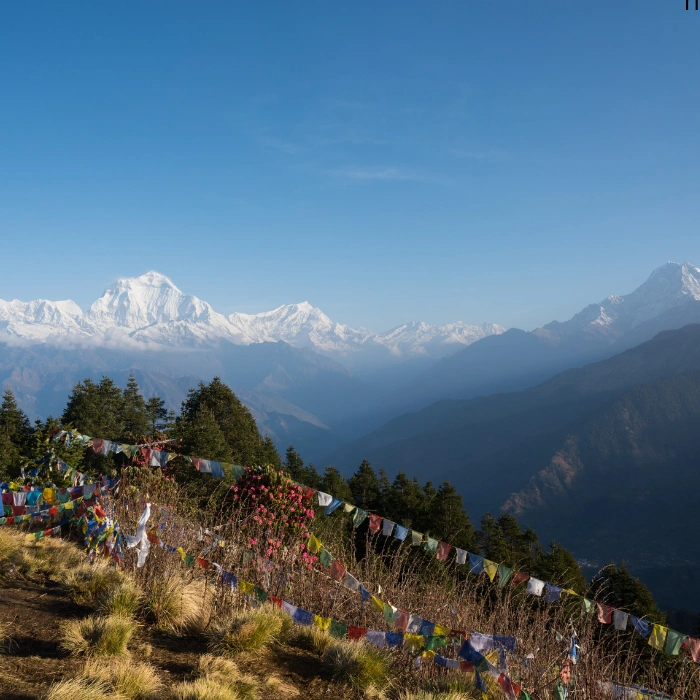
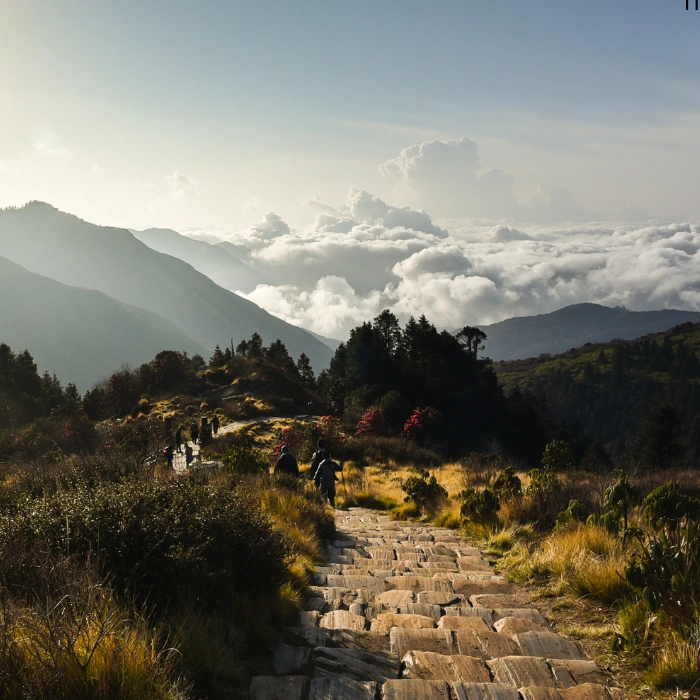
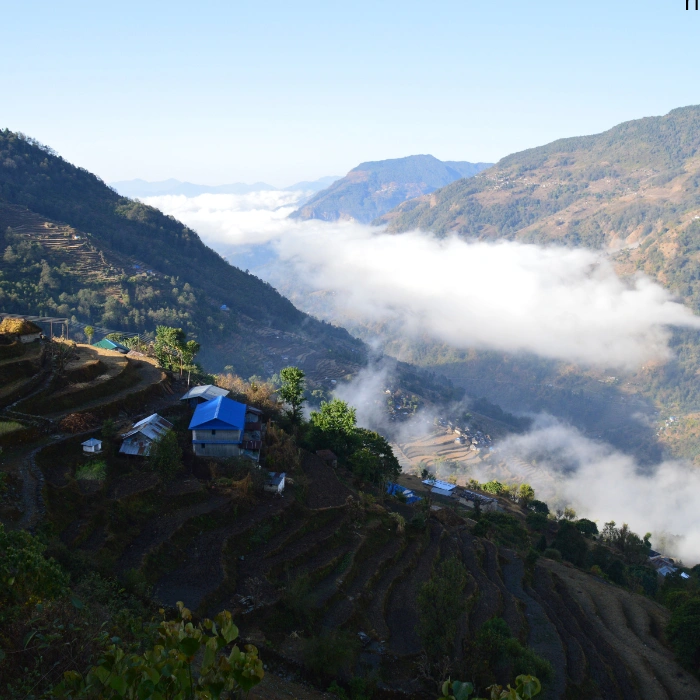
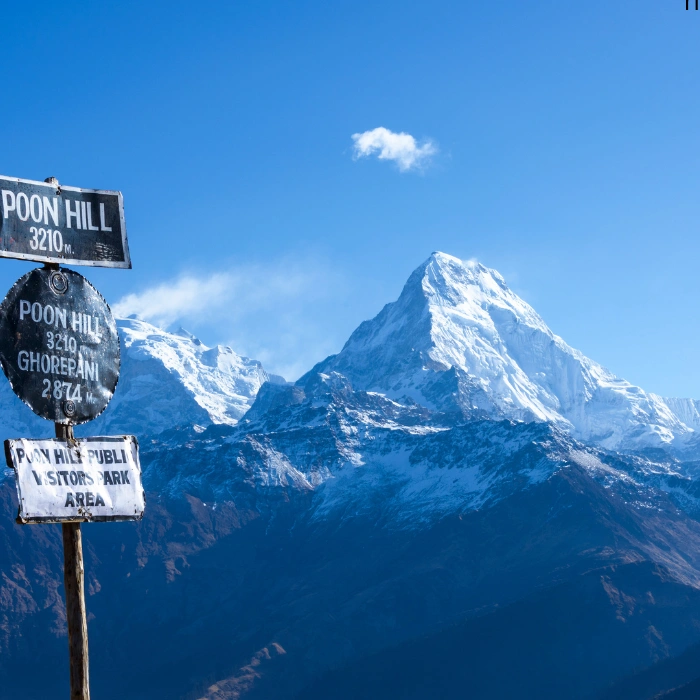
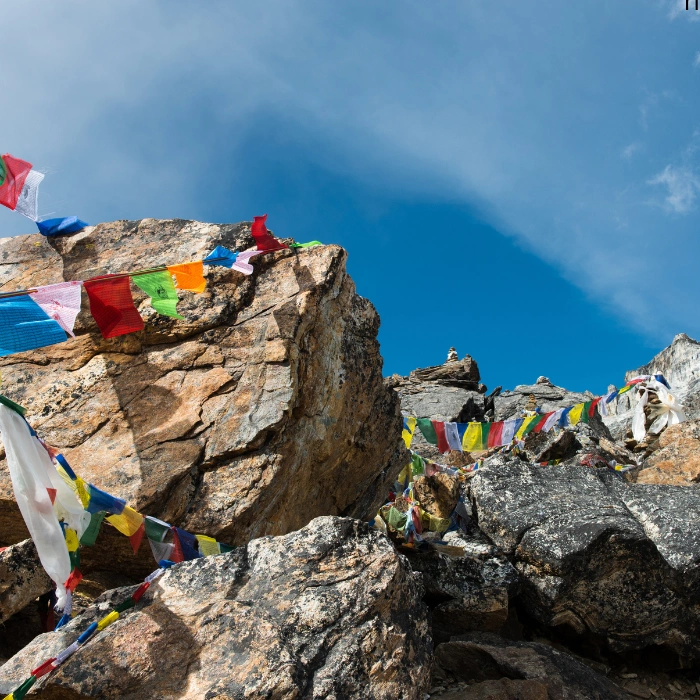
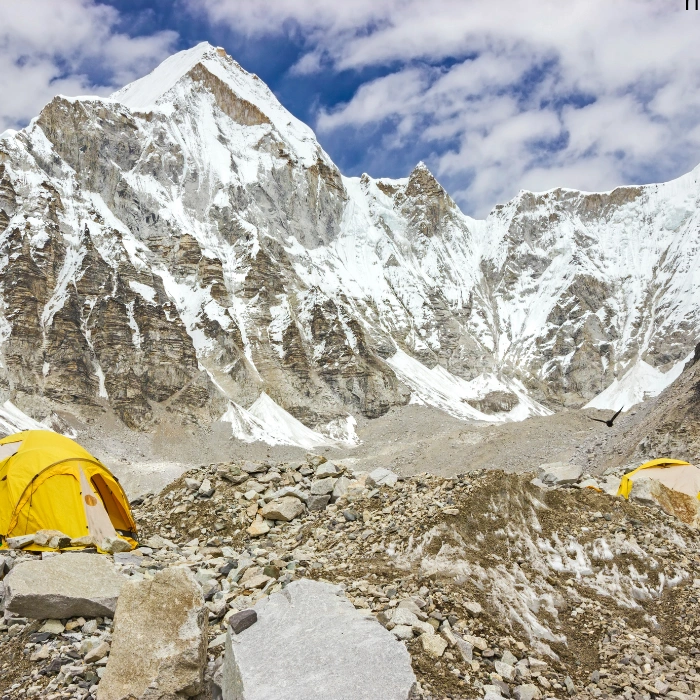
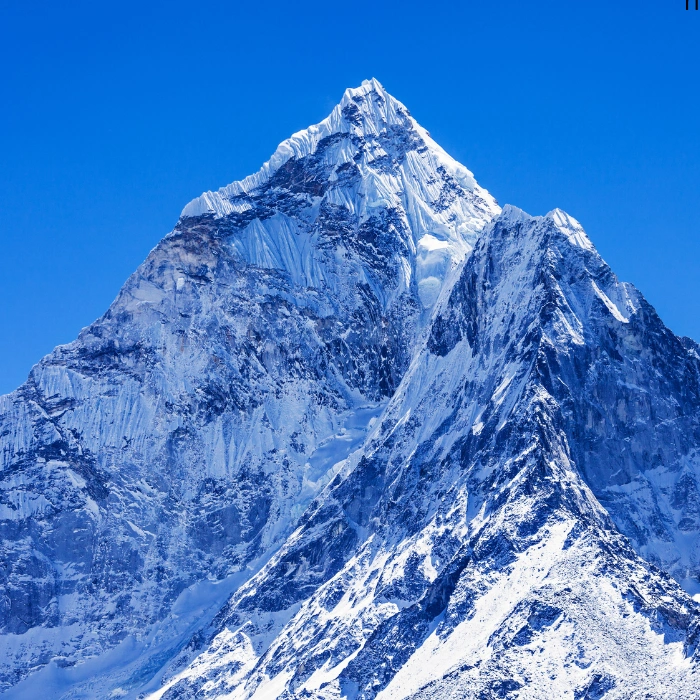
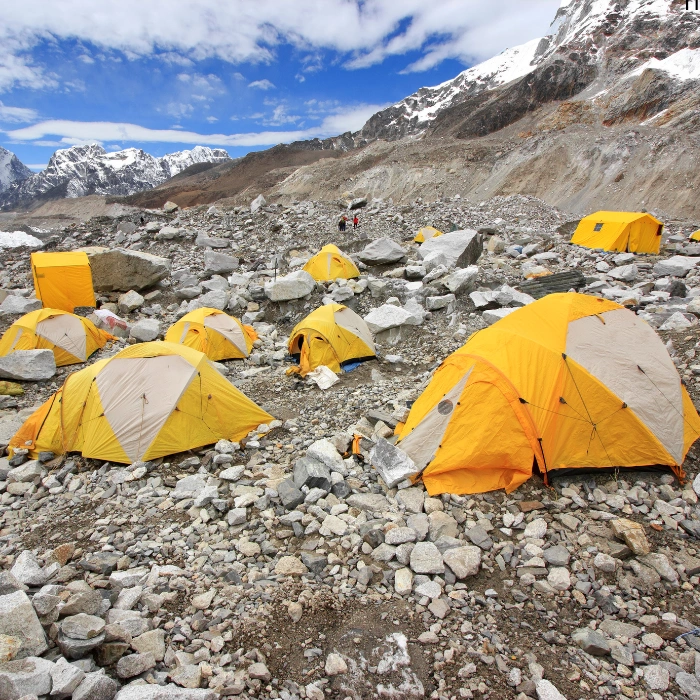


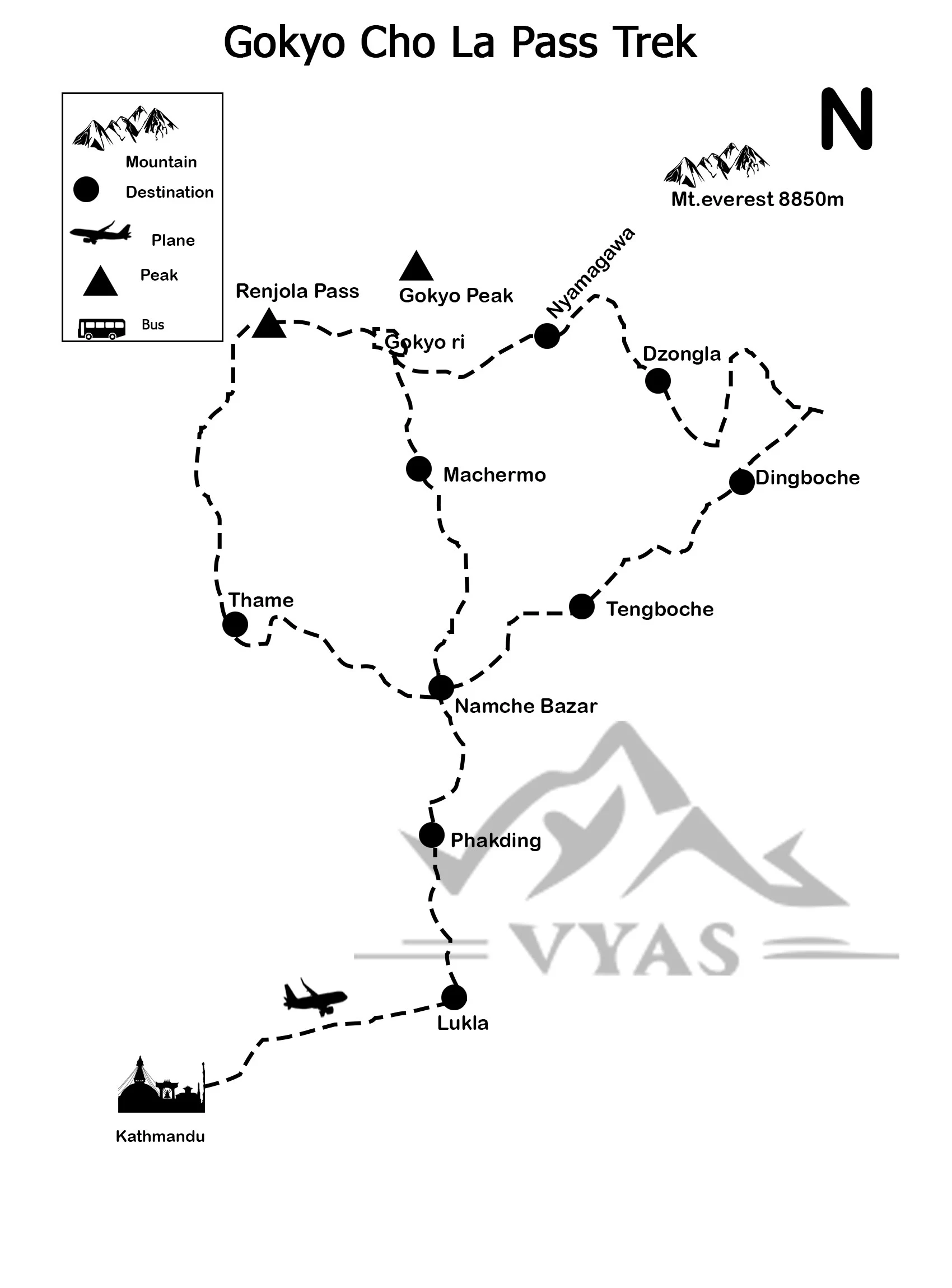






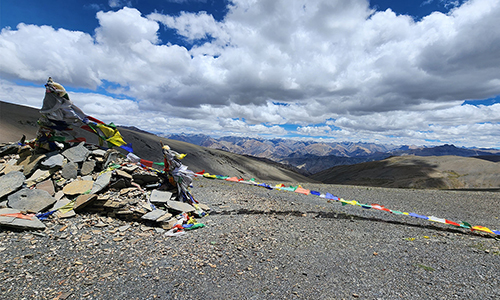

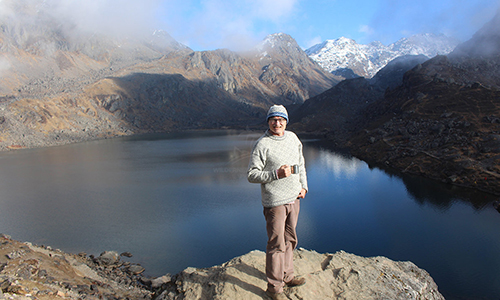


Nathan Williams
2025-06-16 13:01:10
The Gokyo Cho La Pass Trek with Vyas Treks Nepal was the most thrilling and scenic trek I’ve ever done! The views of the Gokyo Lakes, Ngozumpa Glacier, and Mount Everest from Gokyo Ri were absolutely breathtaking. Crossing the Cho La Pass was challenging but incredibly rewarding. The team handled everything smoothly, and our guide ensured we were safe and motivated every step of the way. Truly unforgettable!